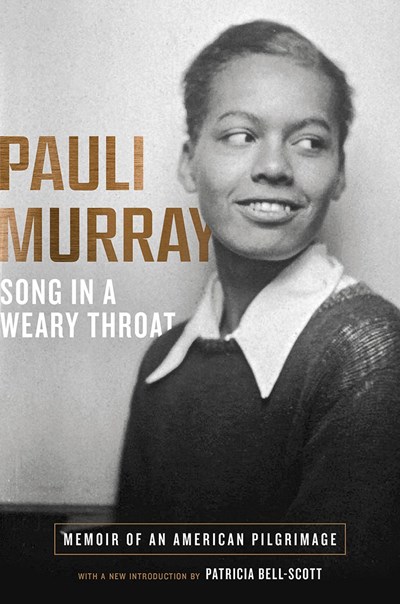
Pauli was born in 1910 and was raised by her school teacher aunt. Pauli was a gifted student who attended Hunter College in New York City. During the Depression, she found employment with the WPA as a teacher and began to publish her poetry and a novel. She found a mentor in Stephen Vincent Benet.
During the war years and early 1950s Pauli became involved with Civil Rights, challenging segregation, and formed a relationship with First Lady Eleanor Roosevelt. In 1941 she began her law studies at Howard University and helped to form CORE and the development of passive resistance.
Harvard law school would not accept Pauli based on her sex. She attended the University of California Boalt School of Law. Her thesis was on equal opportunity in employment. With her color and sex against her, Pauli had trouble making a living practicing law.
In 1956 she published a book on her family history, Proud Shoes: The Story of an American Family. She taught law in Ghana for several years. Back in the US she resumed work in Civil Rights and became active as a feminist and was an organizer for NOW.
In her later life, Pauli worked for equal opportunity for women as church leaders. She became the first African American woman ordained to the Episcopal priesthood.
Pauli saw huge changes in her lifetime. At her birth, she was labeled colored but chose to use the designation Negro. During the rise of black power movements, she resisted the term black, resenting its lowercase nomenclature. She was a pacifist and anti-segregationist who had trouble with the rise of Black Power movements and the younger generation's demands for separate campus organizations. Early she was attracted to Socialism and spent her last years as in the priesthood.
The memoir is filled with details about the work for Civil Rights prior to the more known stories of Rosa Park and Martin Luther King, Jr. There are vivid descriptions of traveling in the Jim Crow south, the closed doors to her race and her sex, the poverty she and her educated family endured.
Pauli's voice is direct and open. She admits to her ignorance and mistakes, her learning curves and limitations. Her accomplishments speak for her determination and courage.
It was wonderful to hear, in her own voice, Pauli's amazing life.
I received a free galley from the publisher through Edelweiss in exchange for a fair and unbiased review.
 |
| Pauli Murray on my quilt I Will Lift My Voice Like a Trumpet |
 |
| I Will Lift My Voice Like a Trumpet by Nancy A. Bekofske |
From the publisher:
Poet, memoirist, labor organizer, and Episcopal priest, Pauli Murray helped transform the law of the land. Arrested in 1940 for sitting in the whites-only section of a Virginia bus, Murray propelled that life-defining event into a Howard law degree and a fight against “Jane Crow” sexism. Her legal brilliance was pivotal to the overturning of Plessy v. Ferguson, the success of Brown v. Board of Education, and the Supreme Court’s recognition that the equal protection clause applies to women; it also connected her with such progressive leaders as Eleanor Roosevelt, Thurgood Marshall, Betty Friedan, and Ruth Bader Ginsberg. Now Murray is finally getting long-deserved recognition: the first African American woman to receive a doctorate of law at Yale, her name graces one of the university’s new colleges. Handsomely republished with a new introduction, Murray’s remarkable memoir takes its rightful place among the great civil rights autobiographies of the twentieth century.
Learn more about Murray at The Pauli Murray Project at the Duke Human Rights Center.
Song in a Weary Throat: Memoir of an American Pilgrimage
Pauli Murray, Patricia Bell-Scott (Introduction by)
Liveright/W. W. Norton
On Sale Date: May 8, 2018
ISBN: 9781631494581, 1631494589
Paperback $22.95

























